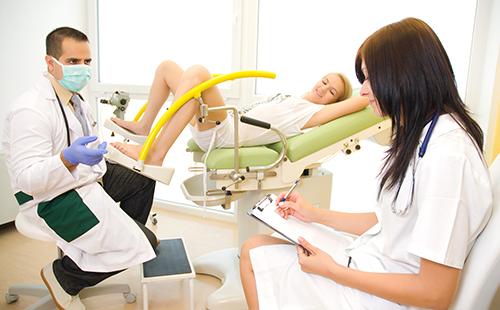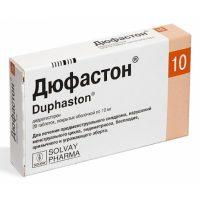The content of the article
What is polycystic ovary? What are the causes? Does a nulliparous woman happen? Is he being treated? Is it possible to determine it on your own, for example, if you compare the result of ultrasound and a photo on the Internet? Does the description of ultrasound provide a comprehensive picture? What threatens and what to do if you have been diagnosed with this?
For the first time, polycystic ovaries were described by Stein and Leventhal; therefore, polycystic ovary syndrome (PCOS) is named after Stein-Leventhal. The classic version of the disease entails metabolic disorders and infertility, which is not always treatable. The increase in the number of women with a diagnosis of PCOS is due to overdiagnosis - often it “sticks” only on the basis of ultrasound, which is not entirely true.
What kind of pathology
If you delve into the term "polycystic", the essence of the disease becomes clear: "poly" from the Latin "a lot", "cyst" is a cavity formation filled with fluid contents. Therefore, in most cases, when establishing PCOS, the doctor has in mind the small-cystic transformation of the ovaries, as a result of which their main function was disrupted and characteristic external signs of the disease appeared.
The causes of polycystic ovaries have not yet been established. Only some links in the development of the disease are known. Therefore, there is no radical therapy yet, all attempts to get rid of the disease are reduced to a decrease in the severity of symptoms, the establishment of menstrual function and the possibility of becoming pregnant.
Primary and secondary polycystic ovary syndrome (PCOS) are distinguished. If the changes appear as a result of some other disease or when taking medication, polycystic disease is secondary. If the "fault" is initially on the ovaries - primary.
A diagnosis of PCOS requires a combination of at least two of the following symptoms:
- irregular menstrual cycle - more than 35 days or with large runs, for example, 21 days, and then 35;
- lack of growth and maturation of follicles - there is no ovulation according to the results of monitoring ultrasound of the ovaries and when plotting basal temperature;
- signs of increased male sex hormones - hair growth in the midline of the abdomen, above the upper lip, on the inside of the thighs, an increase in the level of hormones of the adrenal glands and androgens in the blood according to analyzes;
- signs of polycystic ultrasound - in the presence of nine or more follicles in the study on the periphery or the entire area of the ovaries.
Similar terms to PCOS are the term “polycystic ovaries” and idiopathic (unknown cause) hirsutism.
- Isolated polycystic ovaries. They are established if, against the background of complete health, multiple follicles in the ovaries are detected by ultrasound. In this case, the woman has no pregnancy problems, menstruation, no signs of virilization (androgenization). Pathology does not require treatment.
- Idiopathic hirsutism. It is established if hair growth is recorded in the "male zones", but there are no problems when examining the level of sex hormones, the ovaries are normal and there are no menstrual dysfunctions.Only cosmetic procedures and no other treatment are needed.
The reasons
PCOS is a reflection of systemic disorders in the female body, and not a change in the function of one organ. Pathological processes affect the following departments:
- pituitary gland and hypothalamus - brain structures that synthesize lutropin and folliculotropin (LH and FSH, respectively), necessary for the growth and maturation of follicles;
- ovaries - they are directly affected by the dysfunction of all systems;
- adrenal glands - there is hyperplasia (increase) of the layer responsible for the production of androgens;
- insulin dependent tissue - genitals, adipose tissue and others.
As a result of excessive secretion of androgens (ovarian tissue, adrenal glands), the normal production of FSH and LH is disrupted. This leads to the fact that the follicles in the ovaries, having begun their growth, stop at some stage. Over time, such "cysts" become more, polycystic occurs. An imbalance of sex hormones and a violation of the secretion of active substances by the pituitary and hypothalamus leads to the fact that not a single follicle can mature to a degree of dominant - up to 14-16 mm. This leads to anovulation and infertility.
In parallel, atypical insulin is formed (combined with phosphorus bases), which the body cells do not perceive and send signals to the brain about its need. As a result, the amount of insulin exceeds all possible norms, it begins to actively interact with the cells of the adrenal glands, ovaries, reducing the sensitivity of tissues to the usual doses of hormones, which leads to an even greater imbalance and a change in the secretion of FSH and LH by the pituitary gland.
The described mechanisms entail the following:
- blood levels of insulin increase - but since it has a pathological structure, cells experience a "deficiency" of glucose, obesity and type 2 diabetes develop;
- androgen concentration increases - they exacerbate the imbalance of sex hormones, inhibiting the growth of follicles, so polycystosis and anovulation arise and are aggravated.
Symptoms of polycystic ovary
The signs of polycystic ovary are not always bright, it all depends on the severity of the disorders.
- Menstrual irregularities. Due to the imbalance of sex hormones, there are constant delays of up to two to three months or even more. The longer the intervals between menstruation, the more running the process.
- Infertility. The main cause of pregnancy problems is the lack of ovulation. Due to impaired cyclic release of LH and FSH, follicles do not grow. Ovulation with polycystic ovary occurs every few months and sometimes less.
- Male type hair. Due to the excessive amount of androgens in the blood, excessive hair growth is activated in areas where normally only women have cannons - on the face, stomach, legs. This is called hirsutism.
- Overweight. Cells need insulin in order to absorb glucose, which is then used for energy needs. With polycystosis due to gene mutations, pathological insulin is formed, which the cells do not perceive. There is insulin resistance and type 2 diabetes. Such women have a constant craving for sweets, since “hungry” cells send impulses to the brain that they lack glucose, the level of which in the blood is high. Simple carbohydrates are stored in fat depots, and a woman quickly gains excess weight. It turns out a vicious circle, which can be broken by taking synthetic insulin or drugs that help cells metabolize sugar.
- Endocrine dysfunction. Polycystic disease leads to impaired function of other endocrine organs.The thyroid gland suffers more than others, hypothyroidism occurs (a decrease in hormone production), often of an autoimmune nature.
Appearance
A typical woman with PCOS is as follows:
- is overweight;
- obesity of the type of "apple", that is, on the stomach;
- on the upper lip there is noticeable dark hair or even a “mustache”;
- hair grows along the white line of the abdomen and the inside of the thighs;
Such women, as a rule, have no children. IVF attempts can be unsuccessful, and a possible pregnancy is difficult.

Diagnostics
Diagnosis of PCOS is based on the results of a general and gynecological examinations. There are signs of hirsutism, overweight. When a vaginal examination revealed enlarged ovaries. Other methods that confirm the doctor’s suggestion are also used.
- Hormone tests. Informative determination of FSH, LH, cortisol, DHEA, testosterone. To exclude other diseases accompanied by hyperandrogenemia, the determination of prolactin levels, thyroid hormones (TSH, T3, T4, antibodies to TPO) is indicated.
- Ultrasound study. It is necessary to study the pelvic organs, especially the ovaries. Normally, they should have no more than 10 follicles with a tendency to dominant growth. It is also important to determine the size of the ovaries. With polycystic disease, they are enlarged, and the tissue itself often resembles a "honeycomb".
- Laparoscopy. It is used as not only a diagnosis, but also as a medical procedure. It helps to identify only enlarged and polycystic ovaries.
Before establishing PCOS, it is necessary to exclude the reasons when similar symptoms may appear. For this, ultrasound of the abdominal organs, CT or MRI of different parts of the body can be performed. The table shows what other diseases the symptomatology of polycystic ovaries is similar to.
Table - What is the need to differentiate polycystic
| Diseases | What will help distinguish |
|---|---|
| Unknown cause of hirsutism | - Analyzes and studies do not show deviations; - male type hair |
| Adrenal cortex dysfunction | - There are particular abnormalities in sex hormone assays |
| Hyperprolactinemia | - Increased levels of prolactin in the blood |
| Hypothyroidism | - Thyroid hormone assays |
| Tumors | - Increased androgens |
| Adrenal cortex dysfunction | - Obesity of the upper body; - signs of osteoporosis; - stretch marks; - high levels of cortisol in the blood |
How to treat
It is impossible to cure polycystic. You can only temporarily restore some functions, reduce the risks of other diseases. Treatment for polycystic ovary depends on the goal.
If you are planning a pregnancy
Since polycystic ovary is often detected in infertility and causes problems, many are interested in how to cure the disease in order to get pregnant. There are several options, schemes and methods for each woman individually selected by the doctor.
 Ovulation stimulation. With unsuccessful attempts of a couple to conceive a baby within 6-12 months after the examination and the exclusion of other causes of infertility, ovulation is stimulated with special drugs. An artificial hormonal background is created with the help of estrogens and progestogens, drugs are added that allow for polycystosis to grow a dominant follicle and then an egg. For this, the following drugs are used: Duphaston, Utrozhestan, Klomifen, Proginova, Divigel.
Ovulation stimulation. With unsuccessful attempts of a couple to conceive a baby within 6-12 months after the examination and the exclusion of other causes of infertility, ovulation is stimulated with special drugs. An artificial hormonal background is created with the help of estrogens and progestogens, drugs are added that allow for polycystosis to grow a dominant follicle and then an egg. For this, the following drugs are used: Duphaston, Utrozhestan, Klomifen, Proginova, Divigel.- Laparoscopy. During an operation for polycystic, part of the ovary is excised, drainage can be established if any complications arise. In this case, the “stress” of the ovaries leads to the release of hormones and natural stimulation of ovulation, and in a certain area the dense protein membrane disappears, which, according to many authors, interferes with the growth of follicles during polycystosis. The result should be expected three to six months after laparoscopy.If during this time of pregnancy has not come, it is better not to waste time and move on to the next stage. Often, after laparoscopy, drug stimulation of ovulation is additionally performed to enhance the effect.
- ART and IVF. But even these methods do not always allow a woman to bear a child. Ovaries with polycystic disease may be resistant to ongoing stimulation and doctors simply will not be able to take an egg cell for subsequent IVF. Therefore, sometimes it is necessary to borrow female sex cells from surrogate mothers.
It is also possible to become pregnant with polycystosis on your own, but sometimes you have to wait a baby for years. Some doctors resort to the appointment of oral contraceptives on the eve of planning for polycystic. Indeed, their abolition allows you to slightly increase the likelihood of growth of a full follicle.
Prevention of Complications
Even if a woman does not plan a pregnancy at all in the future, she always needs to adhere to a healthy lifestyle and take hormonal drugs. So you can significantly reduce the likelihood of developing gynecological diseases, to which there is a predisposition for polycystic. The basics of treatment are as follows.
- Diet and physical activity. Women with polycystosis are prone to excessive deposition of fat, so they need to carefully monitor their diet, exercise physical activity of any kind, at least at home. This will help to avoid obesity and the resulting problems.
- Hormone therapy. To correct the changes that are with polycystic ovaries, as well as to prevent the development of unpleasant consequences, hormonal preparations of different directions are prescribed.
- Beauty treatments. With severe hirutism, women often suffer from excessive hair growth in the “male zones”. Prescribing drugs will not lead to their loss, but only slow down growth. Reviews of women with experience of polycystosis confirm this. To remove hair, it is recommended to perform hair removal (for example, laser).
- Physiotherapy. With polycystic disease, physiotherapy procedures are useful - massage, swimming, hydromassage and Charcot's showerbaths with medicinal herbs.
Possible drug therapy is described in the table.
Table - Purpose of prescribing drugs for polycystic
| Drug group | Destination purpose | Pill Examples |
|---|---|---|
| Estrogen progestogens and antiandrogens | - Regulation of the menstrual cycle; - decrease in the level of androgens and their effects; - normalization of estrogen levels (they are elevated with overweight); - in infertility treatment regimens | - "Yarina"; - "Jess"; - "Midian"; - Dimia |
| Metabolic drugs | - Improve glucose uptake by cells; - reduce insulin production |

Folk methods
You should not count on the cure of polycystic ovary using only folk remedies. But part of the recipes will increase the effectiveness of the main therapy.
- Mixture of herbs. it red brush and uterus. It is necessary to take 40 g of crushed brush roots and the same amount of leaves of the pine uterus, pour 500 ml of alcohol or vodka. Let it brew for a week in a dark, cool place, then take one or two tablespoons three times a day.
- Nettle. 10 g of dried leaves pour a glass of boiling water and let stand for 20-30 minutes, then drink twice.
- Mummy. It should be diluted to a pasty state with warm water. After that, apply a moderate amount to gauze and form a swab. Lay at night for 7-14 days.
- Dandelion root. It is necessary to grind the root to a powder state and divide into portions of 2-3 g. Brew and drink instead of tea.
Why is it dangerous?
Polycystic ovary is dangerous because it increases the risks of conditions such as:
- polyps and endometrial hyperplasia;
- uterine body cancer;
- mastopathy;
- cervical disease;
- metabolic disorders;
- infertility.
Polycystic ovary is a systemic disease with dysfunction of the genital and endocrine organs. Despite not always bright symptoms, it requires serious treatment. Laparoscopy for polycystic ovary is considered the "gold standard" if a woman is preparing for pregnancy and trying to overcome infertility. In the complex therapy of pathology, folk remedies, hormonal and metabolic drugs are used.


